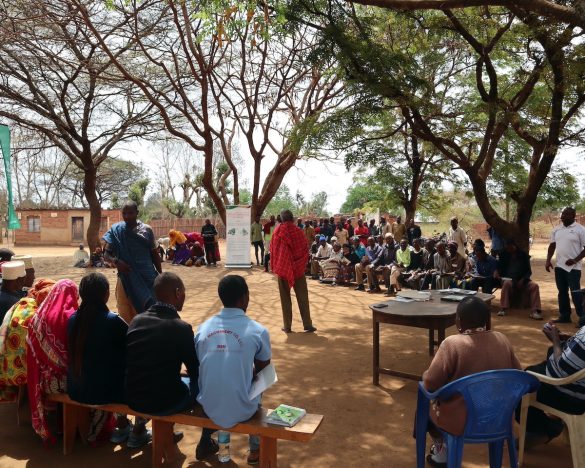New Africa RISING geospatial maps show cropping patterns and land use changes in Mali

Africa RISING and the International Crops Research Institute for the Semi-Arid-Tropics (ICRISAT) geospatial unit in Patancheru, India, have developed land use maps of Africa RISING project intervention sites in southern Mali.
The new maps, which were produced in mid-August 2015, will ease the process of identifying and visualizing different crop domains and possible natural resource management (NRM) sites within the Africa RISING intervention villages in Mali. The maps were produced using high resolution imagery from NASA and the National Oceanic and Atmospheric Administration (NOAA).
‘These maps will help us know the areas to focus our sustainable intensification efforts in Mali; they will also guide preparation of country strategies for sustainable primary productivity,’ explains Birhanu Zemadim. ‘We will use the ground survey data they provide to prepare geospatial products associated with land use/land cover, crop intensity, length of growing periods, land use changes over the period and NRM technologies.’ he adds.

Satellite-based mapping of major cropping systems requires verification of crop information on the field. The team that prepared the maps, which was led by Murali Gumma, Birhanu Zemadim and Cedrick Guedessou, traveled to all the intervention villages by road to cover most of the land use/land cover types and locate the validation sites. They also conducted farmer interviews to understand the local practices and information on cropping intensity and water availability.
The mapping work in southern Mali started in March 2015.
Geospatial products, such as these maps, will help agriculture researchers in the Africa RISING project in identifying major crop domains, intensities, and priority sites for natural resources management interventions.





Latest Comments